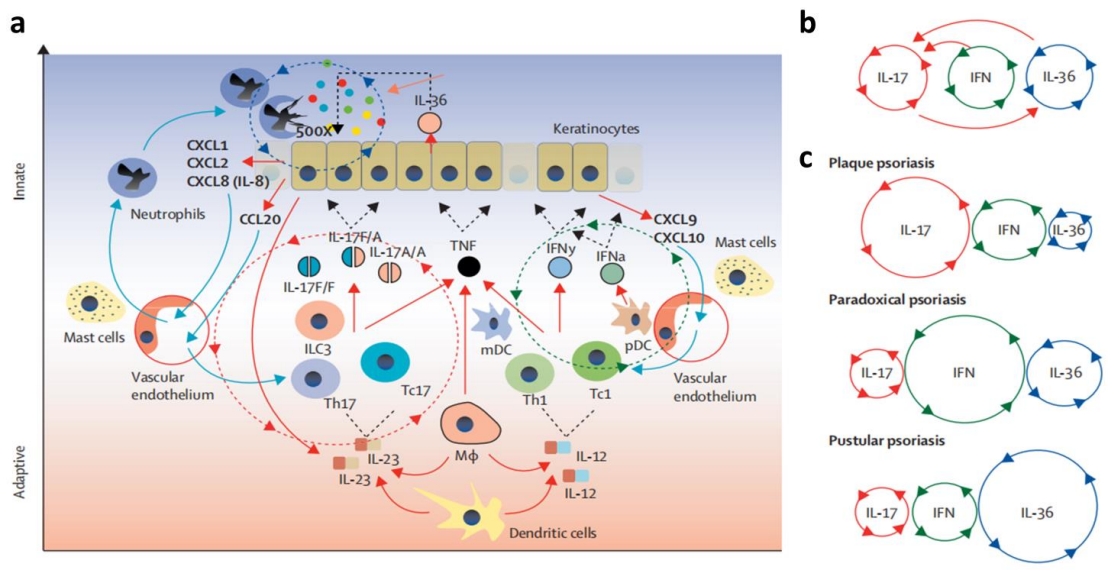
Asia Pacific Academy of Science Pte. Ltd. (APACSCI) specializes in international journal publishing. APACSCI adopts the open access publishing model and provides an important communication bridge for academic groups whose interest fields include engineering, technology, medicine, computer, mathematics, agriculture and forestry, and environment.

Issue release: 30 June 2025
One of the most common disorders worldwide is diabetes, a metabolic condition marked by elevated blood sugar levels. Complications from diabetes can lead to diabetic retinopathy (DR). Later stages of DR can result in blindness, while early stages may only produce slight vision abnormalities or no symptoms at all. Diagnosing diabetic retina (DR) is particularly challenging due to changes in the retina that occur with the stages of the illness. An autonomous DR early detection device can help ophthalmologists with DR screening while also protecting a patient’s vision. The Ensemble of EfficientNet-B0, a unique approach based on the Modified Sparrow Search Algorithm (EMSSA) that provides more accurate classification with less processing time, is presented in this study. The proposed EMSSA regularized classification is carried out after the images have been pre-processed, segmented, and dimension-reduced features constructed using the suggested algorithms. Five phases of non-proliferative images were used in the experiment: Proliferative, moderate, mild, severe, and non-proliferative. By using dimensionally reduced data, the suggested approach reduces complexity and produces an accuracy rate of 98.8%. According to an examination of performance metrics, the system performs better than other cutting-edge methods in terms of F-measures, accuracy, recall, and precision.
Issue release: 30 June 2025
The psychological well-being of parents of children diagnosed with cancer is a crucial yet often overlooked aspect of pediatric oncology. These parents frequently experience high levels of stress, anxiety, and depression, which can undermine their emotional resilience and ability to support their child’s treatment. Despite the substantial mental health burden they face, structured psychological interventions remain inconsistently implemented across healthcare systems. This study explores the psychological challenges encountered by parents of children undergoing cancer treatment, examines existing gaps in mental health support, and evaluates the effectiveness of structured interventions in reducing emotional distress. A comprehensive systematic review of existing literature, combined with qualitative analysis of clinical observations, was conducted. Additionally, the study integrates advancements in computer science, particularly artificial intelligence (AI)-driven mental health tools, telehealth platforms, and data-driven predictive models, to assess their role in enhancing psychological interventions. The analysis includes a comparative evaluation of psychological support programs across different healthcare models, with a particular focus on the Bright IDEAS program and its impact on alleviating parental distress. The findings indicate that parents frequently endure significant psychological strain, yet formal psychological support services remain fragmented and insufficient in many clinical settings. Evidence suggests that Cognitive Behavioral Therapy (CBT), mindfulness-based interventions, and structured peer support programs are among the most effective strategies for reducing parental anxiety and improving emotional well-being. Moreover, AI-powered chatbots, mobile health (mHealth) applications, and digital cognitive therapy tools show promise in providing scalable and personalized mental health support. However, challenges persist in ensuring standardized implementation and equitable access to these interventions. The study highlights the urgent need for integrated psychological support frameworks within pediatric oncology, incorporating digital mental health solutions to enhance accessibility, personalization, and efficiency. Healthcare policymakers and providers should prioritize the adoption of evidence-based psychological interventions, leveraging computational advancements to ensure their effectiveness in diverse clinical environments. Future research should emphasize longitudinal studies and empirical data collection to further validate the impact of these interventions and refine best practices for their implementation.
Issue release: 30 June 2025
Background: The Nrf2/HO-1 signaling pathway is a critical antioxidative stress and cytoprotective pathway, and oxidative stress plays a significant role in myocardial ischemia-reperfusion injury (MIRI). Liquiritigenin, a flavonoid compound derived from licorice, is hypothesized to alleviate MIRI, though its specific mechanism remains unclear. Methods: Following a 15-min pretreatment with liquiritigenin, animals underwent myocardial ischemia-reperfusion injury induction comprising 30-min coronary occlusion and 2-h reperfusion. Continuous cardiac monitoring incorporated both electrocardiography (ECG) and ventricular pressure dynamics, specifically tracking systolic pressure (LVSP), end-diastolic pressure (LVEDP), and ventricular contractility indices (±dp/dtmax). Post-experimental biospecimen analysis included: Myocardial injury evaluation: Serum quantification of lactate dehydrogenase and CK-MB isoenzyme levels. Redox status assessment: Measurement of antioxidant enzyme activities (SOD, GSH) and lipid peroxidation biomarker MDA concentration Histopathological damage: Evaluated via hematoxylin-eosin (HE) staining. Apoptosis: Detected by TUNEL assay. Protein expression: Western blot analysis of Nrf2/HO-1 pathway components (Nrf2, Keap1, HO-1). Conclusion: Liquiritigenin exerts cardioprotective effects against MIRI by activating the Nrf2/HO-1 signaling pathway, thereby attenuating post-reperfusion oxidative stress. This study elucidates the central role of Nrf2/HO-1 pathway interactions in MIRI and identifies liquiritigenin as a potential therapeutic candidate for targeting this pathway.
Issue release: 30 June 2025
Issue release: 30 June 2025
Ovarian cancer remains a significant contributor to female mortality worldwide. Epigenetic alterations, which emerge during carcinogenesis, serve as potential biomarkers for cancer progression. Diabetes-related ankyrin repeat protein (DARP), also known as ankyrin repeat domain-containing protein 23, is a member of the muscle ankyrin repeat protein family and is encoded on chromosome 2q11.2. Aberrant methylation of the DARP gene promoter has been reported in various malignancies, including ovarian cancer. This study aimed to evaluate and compare the methylation status of the DARP gene promoter in women diagnosed with epithelial ovarian cancer to a control group consisting of individuals with benign ovarian tumors. A total of 155 female participants were enrolled in the study, comprising 98 patients with epithelial ovarian cancer and 57 controls with benign ovarian tumors. DNA was extracted from the formalin-fixed paraffin-embedded (FFPE) tissue samples of the participants. The methylation levels of CpG sites within the DARP gene promoter were quantitatively analyzed using pyrosequencing. The methylation levels at specific CpG sites were significantly elevated in women with epithelial ovarian cancer compared to the control group. Additionally, the mean methylation level was significantly higher in the ovarian cancer group compared to the controls (p < 0.001). The findings suggest that methylation of the DARP gene promoter may be relevant in the pathogenesis of ovarian cancer and serve as a predictive marker for disease progression and therapeutic decision-making.
Issue release: 30 June 2025
Psoriasis is a common, chronic, and inflammatory skin disease. Macrophages account for about 61.3% of the inflammatory cells infiltrating psoriatic lesions. Modulating macrophage polarization, inhibiting their infiltration, and targeting the secretion of inflammatory factors and associated inflammatory pathways by these cells can alleviate psoriasis symptoms and inflammation. Moreover, nanomaterials as novel drug carriers, offer unique advantages such as large surface area, easy modification, high biocompatibility, good biodegradability, enhanced systemic adsorption, etc. Nanomaterials have great potential for efficient drug delivery and release, as well as improving therapeutic efficacy while reducing adverse effects. By systematically addressing the role of macrophages in psoriasis pathogenesis and the potential of nanomaterials in treating psoriasis through modulating macrophages, this review enhances our understanding of the disease mechanism and holds promise for novel therapeutic breakthroughs and advancements in the future treatment of psoriasis.
Issue release: 30 June 2025
Autism Spectrum Disorder (ASD) is a complex neurodevelopmental disorder characterized by impairments in social interaction, communication, and repetitive behavioral patterns. ASD is often accompanied by metabolic abnormalities, dysregulation of the immune system, and neuroinflammation. Glycolysis, a central pathway in energy metabolism, is vital for neurodevelopment and functioning. Recent studies have indicated that patients with ASD may experience disturbances in brain metabolism, particularly in the glycolytic pathway, with abnormal lactic acid production and utilization. Lactic acid serves not only as an energy source for cellular functions but also plays a significant role in cell signaling, gene expression regulation, and immune modulation. This review examines the mechanisms of glycolysis, especially the role of lactic acid in ASD; explores the relationship between lactic acid accumulation and neuroinflammation, neuroplasticity, and neurotrophic factors; and discusses the potential of lactic acid as a diagnostic and therapeutic target for ASD. Future research on modulating lactic acid metabolism may offer new strategies for the early diagnosis, precise treatment, and neural repair of ASD.
Issue release: 30 June 2025
Background: Existing research has found that the Spike 2 protein of the Severe Acute Respiratory Syndrome Coronavirus (SARS-CoV) is homogenous to the gp41 protein of the Human Immunodeficiency Virus-1. Postmortem SARS-CoV-2 patients are reported to exhibit microglial activation and expression of interleukin (IL)-1β and IL-6, corroborating with the other in vitro observations. Methods: The translational research draws upon the phenomena from metacognition in dreams to achieve the therapeutic solution conception on Coronavirus Disease 2019 (COVID-19) vaccination-induced central nervous system (CNS) cytokine expression. Results: Partial milestones have been achieved with cognitive-behavioral therapy in combination with agomelatine and γ-aminobutyric acid stimulation physical therapy, and the direct evidence suggests that the temporal amelioration was contributed by interleukin 6 inhibition with Agomelatine’s mechanism of action. The photic and nonphotic treatment designs have progressed in the clinical trials by the evidence-based medicine method. Conclusions: The conservation of the circadian CNS function is the main direction for the purpose of the study design progress, and the case study for the participant with Asperger’s Syndrome indicates the correlation of migraine in autism spectrum disorder with interferon-λ.
Issue release: 30 June 2025
Background: Epidemiological observational studies investigating the association between cathepsins and autoimmune diseases have shown inconsistent results. Hence, we conducted a Mendelian randomization analysis to assess the potential causal impact of cathepsins on these diseases. Methods: Employing a two-sample Mendelian randomization analysis, we used single nucleotide polymorphisms as instrumental variables to examine the impact of cathepsins on autoimmune diseases. The research comprised univariable and multivariable Mendelian randomization analyses, focusing on individual and combined effects of cathepsins. Statistical techniques included inverse variance weighted method and supplementary methods like MR-Egger for comprehensive assessment. Results: In our Mendelian randomization study, we identified diverse associations between cathepsins and autoimmune diseases. Specifically, cathepsin G was found to significantly increase the risk of myasthenia gravis, while the effects of cathepsin B on rheumatoid arthritis and systemic lupus erythematosus varied. Furthermore, multivariable analysis revealed significant correlations between cathepsins F, G and Z with myasthenia gravis. Importantly, no evidence of reverse causation or horizontal pleiotropy was observed. Conclusion: The study establishes a significant causal relationship between cathepsin G and myasthenia gravis risk.
Issue release: 30 June 2025
A problem of sufficiency of the widespread worldview about the mechanism of silver ion’s therapeutic action as its toxicity and destructivity for pathogens has been raised. Is such a therapeutic action always conjugated with direct destruction of the undesirable organisms such as bacteria, fungi, and cancer cells? Several works demonstrating a stimulating action of silver preparations on viability, proliferation of cells, behavioral and cognitive functions, and fertility of laboratory animals and on plants, as well as depletion of induced inflammation, have been considered. The observed effects can not be explained from the point of view of silver ion’s toxicity. A mechanism, which is in eustress (positive stress) induction by silver ions in the exposed organism, is suggested. The mechanism is confirmed by experimental observations and centuries of successful experience in the use of silver preparations in medicine. However, for eustress realization and distress (negative stress) prevention, significant attention should be paid to the form of silver in the preparation, its dose, and the period of exposure as well as to the adaptive resources of the organism. The revealed mechanism should be taken into account at the development and testing of medicine as well as when it may be applied in clinical practice.

Medical Genetics, University of Torino Medical School, Italy

Department of Biomedical, Surgical and Dental Sciences, University of Milan, Italy


 Open Access
Open Access